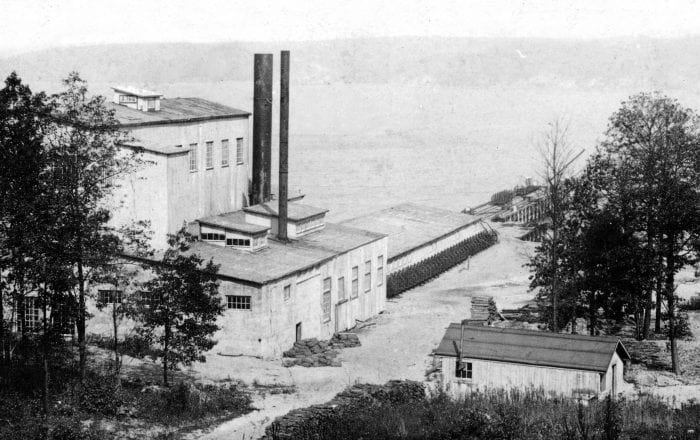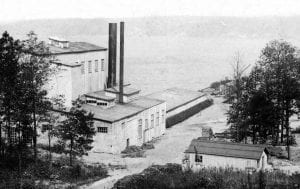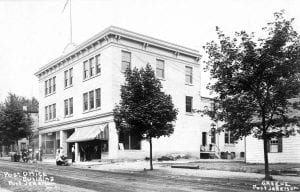Hometown History: Dyett’s Brick Factory on Port Jefferson Harbor

The Port Jefferson Post Office Building, now the Regency condominiums at 202 Main Street, was unlike any other structure in the village’s downtown.

Completed in 1911 and remodeled over the years, the former Post Office Building was constructed of sand-lime brick, rather than common clay brick.
Prized for its natural white color, strength and durability, the attractive sand-lime brick was manufactured nearby at the Dyett Sand-Lime Brick Company.
The corporation was named for its founder, James H. Dyett (1864-1944), who served as the firm’s general manager and had invented a machine for pressing bricks.
In 1908, the company purchased acreage in Bay View Park on the west side of Port Jefferson Harbor and started building its factory.
Located at the former site of California Grove and Pavilion at the foot of Washington Street in today’s Poquott, the property was considered ideal for Dyett’s operations.
To make a sand-lime brick, a mixture of silica sand and hydrated lime is moistened, molded into the desired shape and cured under high pressure steam.
The abundant deposits of the superior quality sand found in and about Port Jefferson provided Dyett with a near inexhaustible supply of the main raw material needed at its plant. In addition, the company’s factory was located directly on Port Jefferson Harbor, enabling Dyett to ship its heavy pallets of brick by barge to waiting markets, easily and cheaply.
Despite this rosy picture, the corporation became embroiled in a fight with Brookhaven Town, which sought to dispossess an intrusive Dyett from unlawfully operating on a portion of the beach fronting the company’s property.
In 1912, the Supreme Court, Suffolk County Special Term, affirmed Brookhaven Town’s title to the land in dispute. The corporation considered its options, but an appeal was never pursued so the decision of the court stood.

Dyett’s honeymoon on the harbor over, the brick company was sold in 1914 to John A. Gibson of Far Rockaway, New York. The following year, Dyett opened a sand-lime plant in New Orleans, Louisiana.
During World War I, the former Dyett complex was taken over by O’Connor-Bennett and the Union Ship and Dock Company, which built four wooden coal barges for the United States Navy before moving the yard’s operations to Flushing, New York.
Beginning in 1921, scows were moored and maintained at the old Dyett dock, which had been leased by the Great Eastern Gravel Corporation.
Alarmed by the growing industrialization of their community, the residents of Bay View Park formed an association in 1927 and voted to buy what was once the site of Dyett’s sand-lime brick factory, thus “forestalling the further encroachment of commercial interests.” The property was later purchased by the Incorporated Village of Poquott and is known today as “California Park.”






